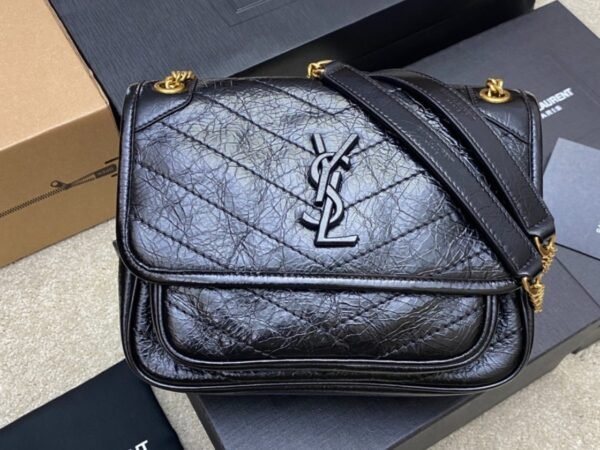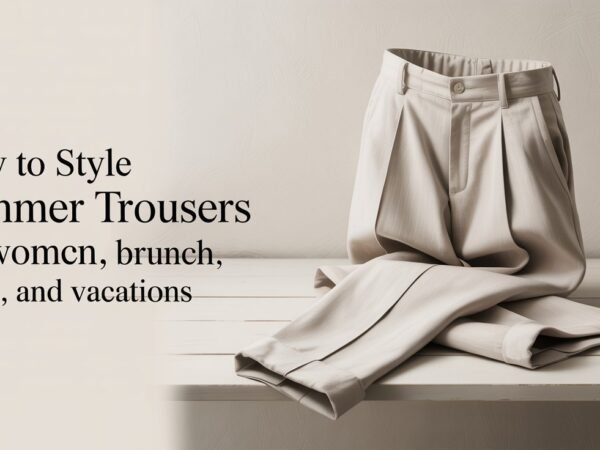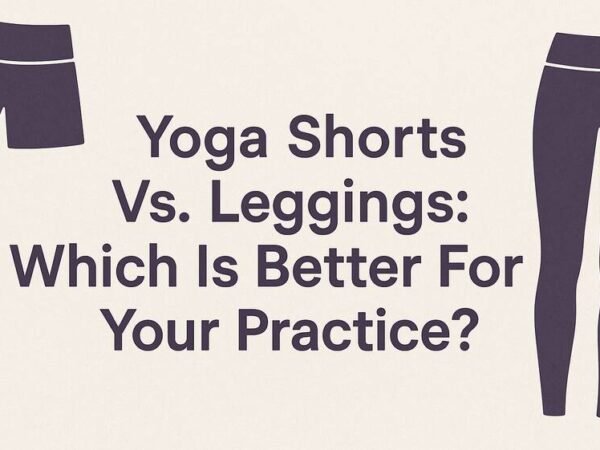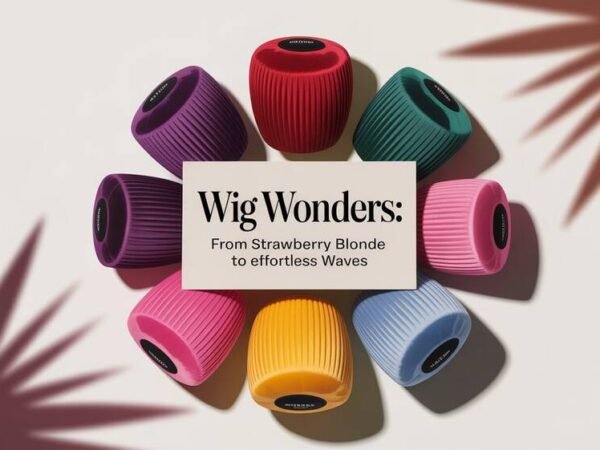The allure of timeless elegance is making a grand comeback in 2024, with the old money aesthetic taking center stage in the fashion world. This classic style, characterized by understated luxury and a deep appreciation for heritage, is captivating those who value sophistication over fleeting trends. But why is this aesthetic gaining such popularity now?
In an era dominated by fast fashion and ever-changing styles, many are seeking a return to quality and tradition. The old money aesthetic embodies these desires, offering a sense of stability and refinement. It resonates with individuals who appreciate the nuances of well-crafted garments and the stories behind them. This resurgence is not just about fashion—it’s a cultural shift towards valuing longevity and timeless appeal.
What Is the Old Money Aesthetic?
The old money aesthetic refers to a style that exudes quiet confidence, elegance, and a connection to longstanding traditions. It’s less about overt displays of wealth and more about the subtle nuances that signify a deep-rooted understanding of class and quality.
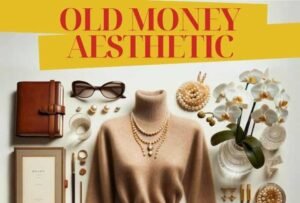
Key Characteristics of the Old Money Aesthetic:
- Timeless Wardrobe Staples: Emphasis on classic pieces that never go out of style.
- Quality Over Quantity: Investing in high-quality items made from superior fabrics.
- Neutral and Muted Color Palette: Preference for colors like navy, beige, ivory, and charcoal.
- Understated Accessories: Minimalistic jewelry, heirloom pieces, and refined watches.
- Attention to Detail: Tailored fits, fine stitching, and impeccable grooming.
Roots in Heritage and Tradition
This aesthetic has its origins in aristocratic societies and long-established families where wealth is inherited rather than newly acquired. The style reflects a lifestyle where elegance is second nature, and there’s no need to flaunt riches overtly. Instead, the focus is on:
- Understated Luxury: Choosing items that are luxurious but not flashy.
- Cultural Appreciation: A deep respect for art, history, and cultural heritage.
- Sophisticated Simplicity: Valuing simplicity that is both elegant and profound.
By embracing the old money aesthetic, one adopts a philosophy that celebrates history, quality craftsmanship, and a lifestyle steeped in tradition. It’s a deliberate move away from the transient nature of modern fashion, focusing instead on creating a lasting impression through timeless elegance.
The History and Origins of Old Money Style
A Glimpse into the Past
To truly appreciate the old money aesthetic, it’s essential to delve into its rich historical roots. This style finds its origins in the aristocratic societies of Europe and America during the late 19th and early 20th centuries. Families who amassed wealth over generations cultivated a distinct fashion sense that was less about ostentation and more about timeless elegance.
Influential Eras:
- The Gilded Age (1870s-1900): A period marked by rapid economic growth in the United States. Prominent families like the Vanderbilts and Rockefellers set the tone for refined dressing, emphasizing quality and tradition.
- Edwardian Era (1901-1910): In the UK, this era saw the upper class embracing sophisticated attire, with men in tailored suits and women in elegant gowns adorned with lace and embroidery.
These periods emphasized social etiquette, discretion, and a sense of responsibility that extended to fashion choices. Clothing was a reflection of one’s upbringing and values rather than a means to display newfound wealth.
Notable Families and Their Influence:
- The Astors: Known for their impeccable taste and contribution to high society, the Astor family exemplified understated luxury.
- The Rothschilds: This European banking family valued tradition and elegance, often seen in bespoke suits and timeless accessories.
These families prioritized:
- Quality Fabrics: Wool, silk, and cashmere were preferred for their durability and comfort.
- Tailoring: Clothing was custom-made to ensure a perfect fit, highlighting the importance of craftsmanship.
- Subtle Details: Monograms, fine stitching, and heirloom pieces added personal touches without being overt.
Old Money vs. New Money: Understanding the Difference
While both old money and new money individuals possess wealth, their approaches to style and lifestyle often differ significantly.
Old Money Aesthetic:
- Heritage and Tradition: Values passed down through generations shape their choices.
- Understated Elegance: Preference for classic styles that don’t draw excessive attention.
- Quality Over Flashiness: Investing in pieces that last a lifetime rather than following trends.
- Discretion: Modesty in display of wealth; logos and brand names are subtle or absent.
New Money Aesthetic:
- Contemporary Trends: More likely to adopt the latest fashion fads.
- Display of Wealth: May choose flashy or branded items to showcase success.
- Brand Consciousness: Prominent logos and designer names are often featured.
- Extravagance: A tendency towards lavish and sometimes ostentatious purchases.
Understanding the Values:
The old money aesthetic is rooted in a philosophy that prioritizes:
- Stewardship: Caring for possessions to pass them down to future generations.
- Cultural Appreciation: Engaging with the arts, education, and philanthropy.
- Community Standing: Upholding a reputation of integrity and respectability.
In contrast, the new money approach might focus more on:
- Individual Expression: Using fashion as a statement of personal achievement.
- Modern Lifestyle: Embracing current technologies and contemporary culture.
- Visibility: Seeking recognition and status within society.
Why This Matters in 2024
As we navigate a world of rapid change and consumerism, the distinction between old and new money aesthetics highlights a growing desire for authenticity and sustainability. The old money style offers a blueprint for those seeking to:
- Reduce Waste: By investing in durable, timeless pieces, we contribute less to the disposable fashion cycle.
- Express Individuality Through Subtlety: Finding uniqueness in quality and fit rather than loud designs.
- Connect with History: Appreciating the stories and traditions that come with classic styles.
By understanding its history and origins, we can better appreciate the depth of the old money aesthetic and thoughtfully incorporate it into our modern wardrobes.
Key Elements of the Old Money Aesthetic
Timeless Wardrobe Staples
Embracing the old money aesthetic in 2024 involves curating a wardrobe that reflects sophistication, quality, and timelessness. The focus is on old money clothing—classic pieces that transcend trends and can be worn for years to come. Let’s delve into the essential wardrobe staples for both women and men.
For Women
Classic Dresses and Skirts
- A-Line and Pencil Skirts: Versatile pieces that can be dressed up or down.
- Little Black Dress (LBD): A staple for various occasions, exuding elegance.
- Midi and Maxi Dresses: In solid colors or subtle patterns like houndstooth or pinstripe.
Tailored Blazers and Coats
- Blazers: Structured blazers in neutral tones like navy, black, or beige.
- Trench Coats: Timeless outerwear perfect for transitional seasons.
- Wool Overcoats: Ideal for colder months, preferably in camel or charcoal.
Quality Knitwear and Blouses
- Cashmere Sweaters: Luxurious and soft, in crew neck or turtleneck styles.
- Silk Blouses: Simple designs with minimal embellishments.
- Cardigans: Fine-knit cardigans for layering.
Trousers and Tailored Pants
- High-Waisted Trousers: Flattering and elongating, in classic cuts.
- Culottes: Offering a blend of comfort and style.
For Men
Tailored Suits and Jackets
- Navy and Gray Suits: The backbone of the old money wardrobe.
- Blazers: Can be paired with dress pants or chinos.
- Sport Coats: In materials like tweed or herringbone for a refined look.
Crisp Dress Shirts and Trousers
- White and Light Blue Shirts: Preferably in Egyptian cotton or linen.
- Chinos and Dress Pants: In neutral shades like khaki, navy, or gray.
Timeless Accessories
- Ties and Pocket Squares: Subtle patterns and high-quality fabrics.
- Cufflinks: Simple designs, possibly heirloom pieces.
- Belts: Leather belts with understated buckles.
Knitwear
- Sweaters: Cashmere or merino wool in V-neck or crew neck styles.
- Cardigans: For layering over shirts or under jackets.
Key Considerations for Both Genders:
- Fit is Paramount: Tailoring is essential. Even the most expensive garment can look unremarkable if it doesn’t fit properly.
- Minimal Branding: The old money aesthetic shies away from visible logos or branding. The quality speaks for itself.
- Versatility: Choose pieces that can be mixed and matched for different occasions.
Color Palette and Fabrics
The color palette and choice of fabrics are crucial elements of the old money aesthetic style guide for 2024. They reflect the understated elegance that defines this look.
Color Palette
- Neutrals: Shades of white, beige, cream, and taupe form the foundation.
- Classic Darks: Navy blue, charcoal gray, and black add depth.
- Earth Tones: Olive green, rust, and burgundy for subtle variety.
- Muted Pastels: Soft blues, pinks, and lavenders can be incorporated thoughtfully.
| Neutral Shades | Classic Darks | Earth Tones | Muted Pastels |
|---|---|---|---|
| Beige | Navy Blue | Olive Green | Soft Blue |
| Cream | Charcoal Gray | Rust | Pale Pink |
| Taupe | Black | Burgundy | Lavender |
Fabrics
- Natural Materials: Emphasize fabrics like cotton, wool, silk, and linen.
- Quality Textures: Cashmere sweaters, silk scarves, and wool coats.
- Durability: Fabrics that not only feel luxurious but also stand the test of time.
Why Fabric Choice Matters:
- Comfort: Natural fabrics are breathable and comfortable against the skin.
- Appearance: High-quality materials drape better and maintain their shape.
- Longevity: Investing in superior fabrics means garments last longer, aligning with the old money value of sustainability.
Accessories That Make a Statement
In the old money aesthetic, accessories are the subtle touches that complete the ensemble without overpowering it. They are carefully chosen, often with personal or familial significance.
Understated Jewelry and Watches
For Women:
- Pearl Earrings and Necklaces: Classics that add a touch of elegance.
- Gold and Silver Pieces: Simple chains, bracelets, or signet rings.
- Heirloom Jewelry: Pieces passed down through generations.
For Men:
- Classic Watches: Brands with heritage, featuring leather straps or metal bracelets.
- Cufflinks: Minimalistic designs, possibly monogrammed.
- Wedding Bands and Signet Rings: Simple and understated.
Leather Goods
- Belts: High-quality leather belts in black or brown with simple buckles.
- Shoes:
- For Women: Loafers, ballet flats, or low-heeled pumps.
- For Men: Oxfords, brogues, or loafers.
- Handbags and Briefcases:
- Timeless Designs: Structured shapes without flashy logos.
- Neutral Colors: To complement any outfit.
Heirloom Pieces and Their Significance
- Sentimental Value: Accessories that tell a story or hold family history.
- Quality Craftsmanship: Often handmade, showcasing exceptional skill.
- Uniqueness: Pieces that are not mass-produced, adding to their exclusivity.
Incorporating Accessories Thoughtfully:
- Less is More: Opt for one or two key pieces rather than multiple accessories.
- Consistency: Ensure accessories align with the overall outfit in style and color.
- Maintenance: Keep items in excellent condition, reflecting care and respect.
Case Study: The Power of Accessories
Consider the example of Grace Kelly, whose style epitomized the old money aesthetic. Her choice of accessories, such as the iconic Hermès Kelly bag and her pearl jewelry, complemented her outfits without overshadowing them. These items became synonymous with timeless elegance and are still celebrated today.
Key Takeaways:
- Accessories should enhance, not dominate, your look.
- Investing in quality pieces pays off in longevity and style.
- Personal significance adds depth to your fashion choices.
By focusing on these key elements—wardrobe staples, color palette, fabrics, and accessories—you can authentically embody the old money aesthetic style in 2024. Remember, it’s not just about the clothes you wear but the values and attitude you bring to your style.
Incorporating Old Money Style in 2024
Modern Twists on Classic Looks
Embracing the old money aesthetic style in 2024 doesn’t mean you have to look like you’ve stepped out of a history book. Modern fashion allows for innovative twists on classic staples, blending tradition with contemporary flair.
Blending Contemporary Fashion with Traditional Elements
- Mix and Match: Pair a classic blazer with modern denim jeans for a casual yet sophisticated look.
- Updated Silhouettes: Opt for tailored pieces with modern cuts, like a high-waisted trouser with a cropped hem.
- Innovative Fabrics: Incorporate sustainable and tech-enhanced materials that maintain the look but offer modern benefits, such as wrinkle-resistant wool or organic cotton blends.
Examples of Modern Designers Embracing the Old Money Aesthetic
- Ralph Lauren: Continues to showcase collections that epitomize timeless elegance with a modern touch.
- Victoria Beckham: Offers minimalist designs that resonate with the old money style.
- Brunello Cucinelli: Known for luxury casual wear that blends comfort with sophistication.
Case Study: The Rise of Preppy Streetwear
In recent years, there’s been a surge in preppy streetwear, which combines elements of the old money aesthetic with urban fashion. Brands like Tommy Hilfiger and Gant have introduced lines that appeal to younger audiences seeking that classic look with a modern edge.
Sustainable and Ethical Fashion Choices
One of the key aspects of the old money aesthetic style guide for 2024 is a focus on sustainability and ethical fashion. This aligns with the values of quality over quantity and the desire for lasting, meaningful pieces.
Investing in Quality Pieces
- Longevity: High-quality garments last longer, reducing the need for frequent replacements.
- Cost-Per-Wear: While the initial investment may be higher, the cost per wear decreases over time.
Environmental Impact
- Reduced Waste: By buying less and choosing durable items, you contribute less to the fast fashion waste problem.
- Sustainable Materials: Look for fabrics like organic cotton, recycled wool, and ethically sourced cashmere.
Ethical Production
- Fair Labor Practices: Support brands that ensure fair wages and safe working conditions.
- Transparent Supply Chains: Companies that are open about their production processes often adhere to higher ethical standards.
Tips for Sustainable Shopping
- Research Brands: Use resources like the Good On You app to check a brand’s sustainability rating.
- Second-Hand Shopping: Vintage stores and consignment shops are treasure troves for old money style pieces.
- Upcycling: Tailor or repurpose existing garments to fit current trends.
Grooming and Personal Care
An essential component of the old money aesthetic is impeccable grooming and personal care. Attention to detail extends beyond clothing to one’s overall appearance.
Hairstyles for Women and Men
For Women
- Simple and Elegant Styles: Chignons, loose waves, or sleek ponytails.
- Natural Colors: Opt for hair colors that are close to your natural shade.
- Healthy Hair Care: Invest in quality haircare products to maintain shine and strength.
For Men
- Classic Cuts: Think side parts, crew cuts, or neatly trimmed styles.
- Well-Groomed Facial Hair: If you have facial hair, keep it neatly trimmed and maintained.
- Regular Haircuts: Maintain your style with consistent visits to the barber.
Makeup and Fragrance
Subtle Makeup Tips
- Natural Look: Use neutral tones to enhance features without being overdone.
- Quality Products: Invest in makeup that cares for your skin, free from harsh chemicals.
- Minimalism: Focus on one feature, like well-defined brows or a classic red lip.
Signature Scents
- Timeless Fragrances: Choose perfumes or colognes with classic notes like sandalwood, vanilla, or bergamot.
- Moderation: A subtle scent is more in line with the old money aesthetic than an overpowering fragrance.
Skincare and Wellness
- Skincare Routine: Maintain a consistent routine using high-quality products suitable for your skin type.
- Healthy Lifestyle: Diet and exercise contribute to a radiant appearance.
- Stress Management: Practices like meditation or yoga can enhance overall well-being.
Table: Essential Grooming Checklist
| Aspect | Tips |
|---|---|
| Haircare | Regular trims, use quality products |
| Skincare | Daily routine, sunscreen, hydration |
| Makeup (Women) | Neutral tones, minimal application |
| Facial Hair (Men) | Neatly trimmed, clean lines |
| Fragrance | Subtle, classic scents |
| Nail Care | Clean, well-manicured nails |
| Oral Hygiene | Regular dental check-ups, whitening if desired |
Quotes on Personal Presentation
“Elegance is the only beauty that never fades.” – Audrey Hepburn
“The way we dress affects the way we think, the way we feel, the way we act, and the way others react to us.” – Judith Rasband
Key Takeaways
- Grooming is as important as clothing in the old money aesthetic.
- Subtlety and natural looks are preferred over bold trends.
- Investing in personal care reflects self-respect and attention to detail.
Lifestyle and Etiquette
Living the Old Money Lifestyle
Embracing the old money aesthetic style goes beyond just clothing—it’s about adopting a lifestyle that reflects tradition, sophistication, and a deep appreciation for culture. The old money lifestyle is characterized by timeless hobbies, refined tastes, and a commitment to personal growth.
Traditional Hobbies and Interests
Sailing and Yachting
- Symbolizes elegance and a connection with nature.
- Participating in regattas or leisurely sailing trips.
Horseback Riding
- A classic pastime often associated with prestige.
- Involvement in polo matches or equestrian events.
Tennis and Golf
- Social sports that promote networking and physical fitness.
- Memberships at exclusive clubs.
Classical Arts
- Attending opera, ballet, or symphony performances.
- Supporting local art galleries and exhibitions.
Philanthropy and Volunteering
- Active participation in charitable organizations.
- Hosting fundraising events for causes you care about.
The Significance of Education, Art, and Culture
Lifelong Learning
- Pursuing higher education and continuous personal development.
- Engaging in intellectual discussions and debates.
Cultural Appreciation
- Collecting art, antiques, or rare books.
- Traveling to historical sites and cultural landmarks.
Language Proficiency
- Learning multiple languages to enhance communication and understanding of different cultures.
Manners and Social Grace
In the old money aesthetic, how you carry yourself is just as important as what you wear. Good manners and social etiquette are non-negotiable aspects of this lifestyle.
Importance of Etiquette in the Old Money Circle
Politeness and Respect
- Using courteous language and showing consideration for others.
- Being mindful of social cues and body language.
Discretion
- Keeping personal matters private.
- Avoiding gossip and refraining from boasting about achievements.
Punctuality
- Valuing others’ time by arriving promptly to engagements.
- Sending timely RSVPs and thank-you notes.
Tips on Social Interactions and Hosting Events
Hosting with Elegance
- Planning well-thought-out gatherings with attention to detail.
- Creating a welcoming atmosphere for guests.
Conversational Skills
- Being a good listener and engaging in meaningful discussions.
- Avoiding controversial topics in polite company.
Dress Codes
- Understanding and adhering to appropriate attire for various occasions.
- Communicating dress expectations to guests when hosting.
Table: Essential Old Money Etiquette Do’s and Don’ts
| Do’s | Don’ts |
|---|---|
| Send handwritten thank-you notes | Discuss personal wealth |
| Introduce people with full names and titles | Interrupt conversations |
| Stand when someone enters the room | Use slang or overly casual language |
| Use proper table manners | Display excessive affection in public |
Embracing Values and Responsibility
Community Involvement
- Taking active roles in community development.
- Supporting local businesses and artisans.
Environmental Stewardship
- Practicing sustainability and conservation efforts.
- Promoting responsible use of resources.
Quotes on Manners and Etiquette
“Good manners will open doors that the best education cannot.” – Clarence Thomas
“Etiquette is the science of living. It embraces everything. It is ethics. It is honor.” – Emily Post
Key Takeaways
- The old money lifestyle emphasizes tradition, culture, and refinement.
- Manners and etiquette are fundamental, reflecting respect for oneself and others.
- Engaging in classic hobbies and being socially responsible enriches your life and aligns with the old money aesthetic.
Building Your Old Money Wardrobe
Shopping Guide: Where to Find Classic Pieces
Creating an old money aesthetic wardrobe involves sourcing high-quality garments that stand the test of time. Knowing where to shop is crucial.
High-End Brands and Boutiques
- Brooks Brothers: Known for timeless suits, dress shirts, and outerwear.
- Burberry: Renowned for their iconic trench coats and sophisticated apparel.
- Hermès: Luxury accessories like scarves, ties, and leather goods.
- Loro Piana: Specializes in high-quality cashmere and wool products.
Vintage and Second-Hand Shops
Benefits of Shopping Vintage
- Unique pieces with history and character.
- Higher quality materials and craftsmanship.
- Sustainable and environmentally friendly choice.
Tips for Finding Hidden Gems
- Visit reputable vintage boutiques and consignment stores.
- Attend estate sales and auctions.
- Explore online marketplaces with verified sellers.
Online Resources
- Vestiaire Collective: Authentic luxury consignment with a wide selection.
- eBay: Search for specific vintage items, but ensure seller credibility.
Investing Wisely
Building a wardrobe that reflects the old money aesthetic is about smart investments.
How to Choose Pieces That Offer Longevity and Style
Timeless Designs
- Select classic silhouettes that won’t go out of fashion.
- Avoid overly trendy details or patterns.
Quality Materials
- Opt for natural fabrics like wool, silk, cotton, and cashmere.
- Check the stitching, lining, and overall construction.
Versatility
- Choose items that can be mixed and matched.
- Neutral colors enhance coordination.
The Value of Tailoring and Custom-Made Clothing
Perfect Fit
- Tailored clothes enhance your appearance and comfort.
Personalization
- Custom pieces allow for subtle details that reflect your style.
Longevity
- Well-made garments last longer, providing better value over time.
Chart: Investment Pieces Worth Considering
| Item | Reason to Invest |
|---|---|
| Tailored Suit (Men/Women) | Versatile and suitable for many events |
| Trench Coat | Classic outerwear for various seasons |
| Leather Handbag | Durable and stylish accessory |
| Cashmere Sweater | Luxurious and long-lasting knitwear |
| Quality Dress Shoes | Comfort and style for years |
Budgeting Tips
Prioritize Essentials
- Start with foundational items before adding statement pieces.
Seasonal Sales
- Take advantage of discounts during off-seasons.
Cost Per Wear
- Higher upfront costs can be offset by the longevity of the item.
Example: Calculating Cost Per Wear
If you purchase a $500 coat and wear it 100 times over several years:
Cost Per Wear=$500100=$5 per wear\text{Cost Per Wear} = \frac{\$500}{100} = \$5 \text{ per wear}
Maintenance is Key
Proper Care
- Follow care instructions to extend the life of your garments.
Storage
- Use garment bags, proper hangers, and keep items in a cool, dry place.
Regular Cleaning
- Clean items as recommended to maintain their appearance.
Key Takeaways
- Invest in high-quality, timeless pieces that align with the old money aesthetic.
- Tailoring ensures the perfect fit and elevates your wardrobe.
- Wise investments in clothing provide better value and longevity.
Icons and Inspirations
Celebrities Embodying the Old Money Aesthetic
Looking to modern-day figures can provide inspiration on how to incorporate the old money aesthetic into your style.
Kate Middleton, Duchess of Cambridge
Why She Inspires
- Epitomizes elegance with classic silhouettes and refined choices.
- Balances tradition with contemporary fashion sensibilities.
Signature Styles
- Tailored coat dresses.
- Neutral color palettes.
- Minimalistic accessories.
Ralph Lauren
Why He Inspires
- Embodies the American old money aesthetic in both personal style and design.
Signature Styles
- Polo shirts, blazers, and classic suits.
- Incorporation of equestrian and nautical themes.
Anderson Cooper
Why He Inspires
- Known for his polished, professional appearance.
Signature Styles
- Well-tailored suits.
- Simple, elegant ties and pocket squares.
Historical Figures to Emulate
Grace Kelly
Legacy
- Hollywood actress turned Princess of Monaco.
- Symbol of timeless beauty and sophistication.
Signature Styles
- Elegant dresses.
- Pearls and understated jewelry.
- The iconic Hermès Kelly bag.
Cary Grant
Legacy
- Renowned actor known for his debonair style.
Signature Styles
- Sharp suits.
- Polished shoes.
- Effortless charm.
Jacqueline Kennedy Onassis
Legacy
- Former First Lady and fashion icon.
Signature Styles
- Pillbox hats.
- A-line dresses.
- Oversized sunglasses.
Incorporating Their Influence
Study Their Looks
- Analyze photographs and note key elements.
Adapt to Modern Times
- Update classic styles with contemporary touches.
Embrace Their Philosophy
- Focus on grace, poise, and understated elegance.
Quotes from Style Icons
“Elegance is the only beauty that never fades.” – Audrey Hepburn
“Style is knowing who you are, what you want to say, and not giving a damn.” – Orson Welles
Key Takeaways
- Drawing inspiration from icons helps refine your personal style.
- Focus on the timeless aspects of their looks.
- Adapt their principles to fit your individuality.
Tips for Staying Authentic
Avoiding Common Mistakes
While embracing the old money aesthetic, it’s important to remain genuine and avoid pitfalls that can undermine your efforts.
Steering Clear of Flashy Logos and Ostentatious Displays
Minimal Branding
- Choose items without prominent logos.
- Let the quality of the piece speak for itself.
Subtle Elegance
- Avoid overly flashy or extravagant designs.
- Focus on classic, understated pieces.
Understanding That Less Is More
Quality Over Quantity
- Invest in a smaller number of high-quality items.
Avoid Over-Accessorizing
- Select a few key accessories rather than many.
Simplicity
- Embrace clean lines and simple silhouettes.
Personalizing the Aesthetic
Authenticity comes from making the old money aesthetic your own.
Incorporating Personal Touches and Family Heritage
Heirloom Pieces
- Wear jewelry or accessories passed down through your family.
Custom Details
- Monogrammed items like cufflinks or handkerchiefs.
Cultural Elements
- Include subtle nods to your cultural background.
Balancing Tradition with Personal Style
Mixing Old and New
- Pair vintage pieces with modern attire.
Expressing Individuality
- Choose colors or patterns that reflect your personality.
Adapting to Your Lifestyle
- Ensure your wardrobe suits your daily activities and environment.
Key Takeaways
- Stay true to yourself while embracing the old money aesthetic.
- Avoid common mistakes by focusing on authenticity and subtlety.
- Personal touches make your style unique and meaningful.
Frequently Asked Questions
Can Anyone Adopt the Old Money Aesthetic?
Absolutely! The old money aesthetic is about timeless style, quality, and elegance, which are accessible to anyone regardless of background. It’s more about embracing certain values and making thoughtful choices rather than having a particular financial status.
Is the Old Money Style Expensive to Maintain?
While quality items often come with a higher price tag, they are investments that last longer. There are ways to adopt the aesthetic on a budget:
- Vintage Shopping: Find quality pieces at lower prices.
- Prioritize Purchases: Start with essential items and build gradually.
- Cost Per Wear: Higher upfront costs can be offset by the longevity of the item.
How Does the Old Money Aesthetic Fit into Today’s Casual Culture?
The old money aesthetic can be adapted to modern, casual settings:
- Casual Classics: Polo shirts, chinos, and loafers offer a relaxed yet refined look.
- Quality Basics: Invest in well-made jeans and t-shirts in neutral colors.
- Mix and Match: Pair traditional pieces with contemporary items.
How Do I Begin Building an Old Money Wardrobe?
- Assess Your Current Wardrobe: Identify items that align with the aesthetic.
- Start with Essentials: Invest in key pieces like a tailored blazer or quality shoes.
- Set a Budget: Plan your purchases and prioritize accordingly.
What Should I Avoid When Adopting This Style?
- Overt Branding: Avoid clothes with large logos or brand names.
- Fast Fashion: Steer clear of cheaply made, trendy items.
- Excessive Flashiness: Keep accessories and embellishments minimal.
Conclusion
Embracing Timeless Style in a Modern World
The Old Money Aesthetic Style Guide for 2024 is not just about fashion—it’s a lifestyle choice that emphasizes elegance, quality, and cultural appreciation. By incorporating the principles outlined in this guide, you can cultivate a style that is both timeless and personally meaningful.
In a world where trends come and go, embracing the old money aesthetic allows you to stand out through understated sophistication. It’s about making conscious choices, investing in quality over quantity, and carrying yourself with grace.
Also read interesting articles at disboard.co.uk



